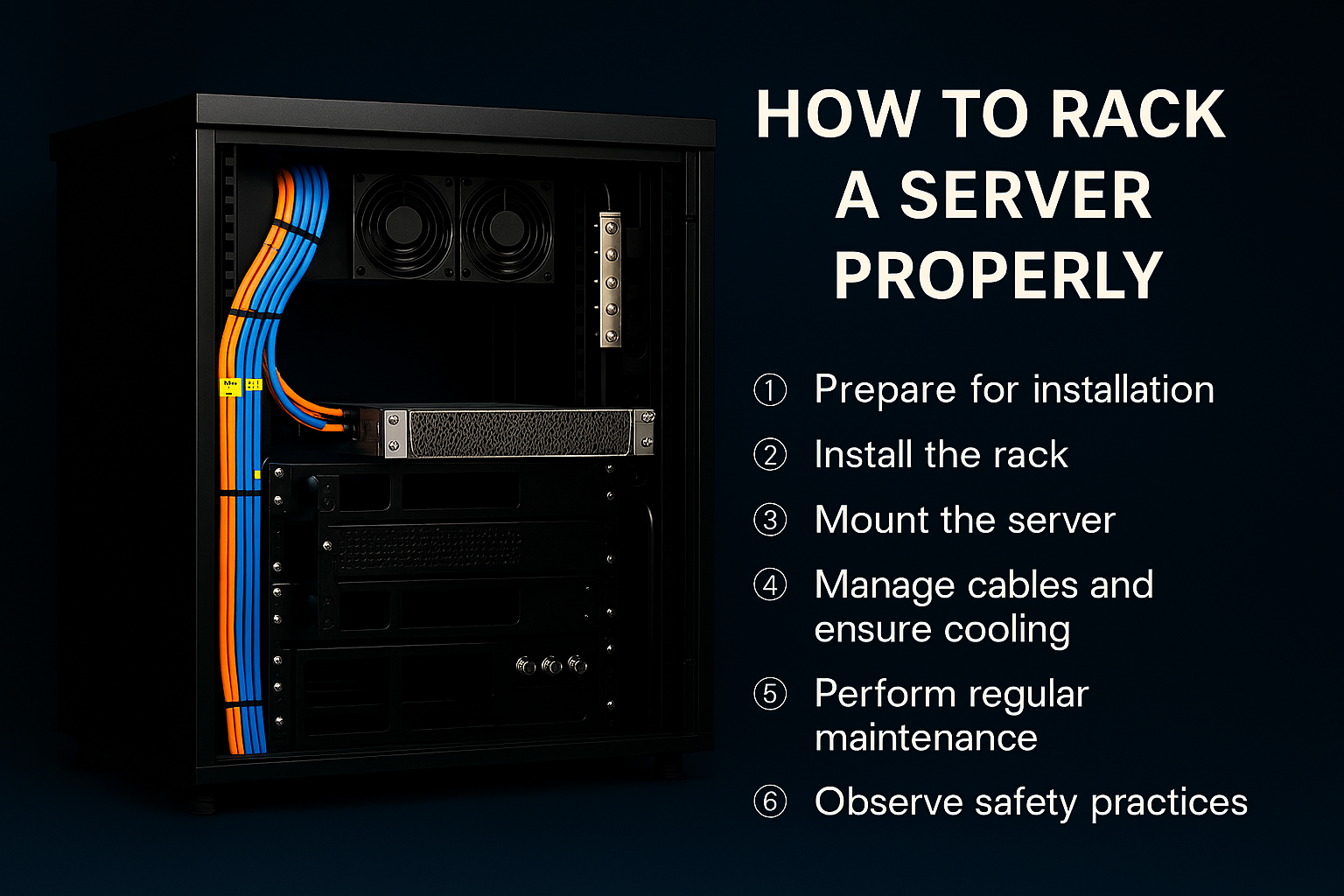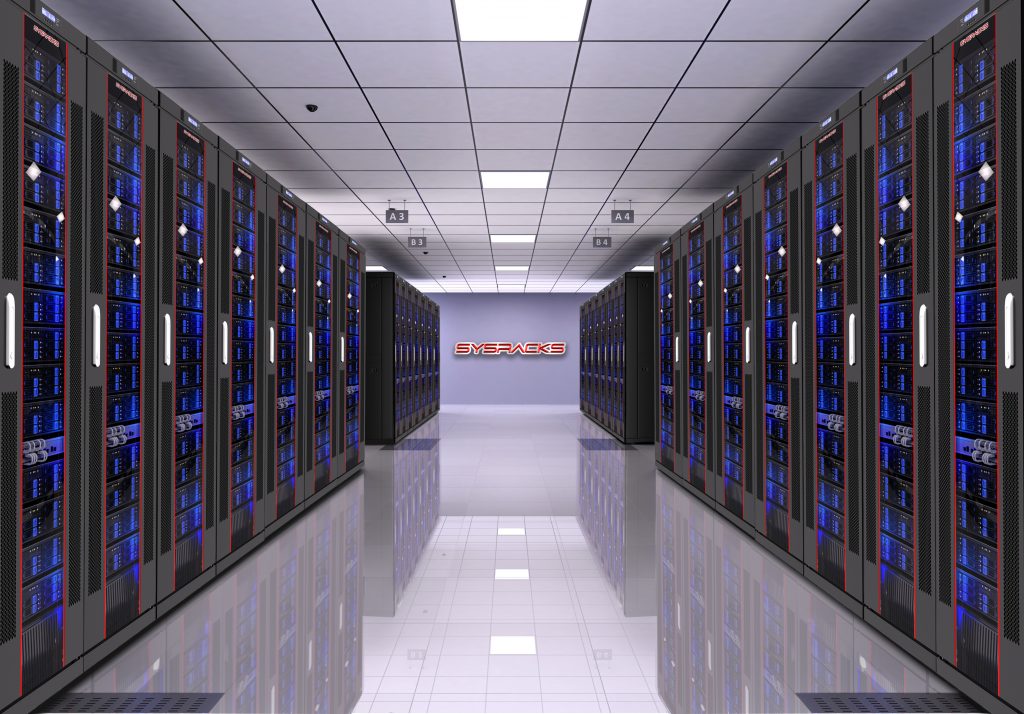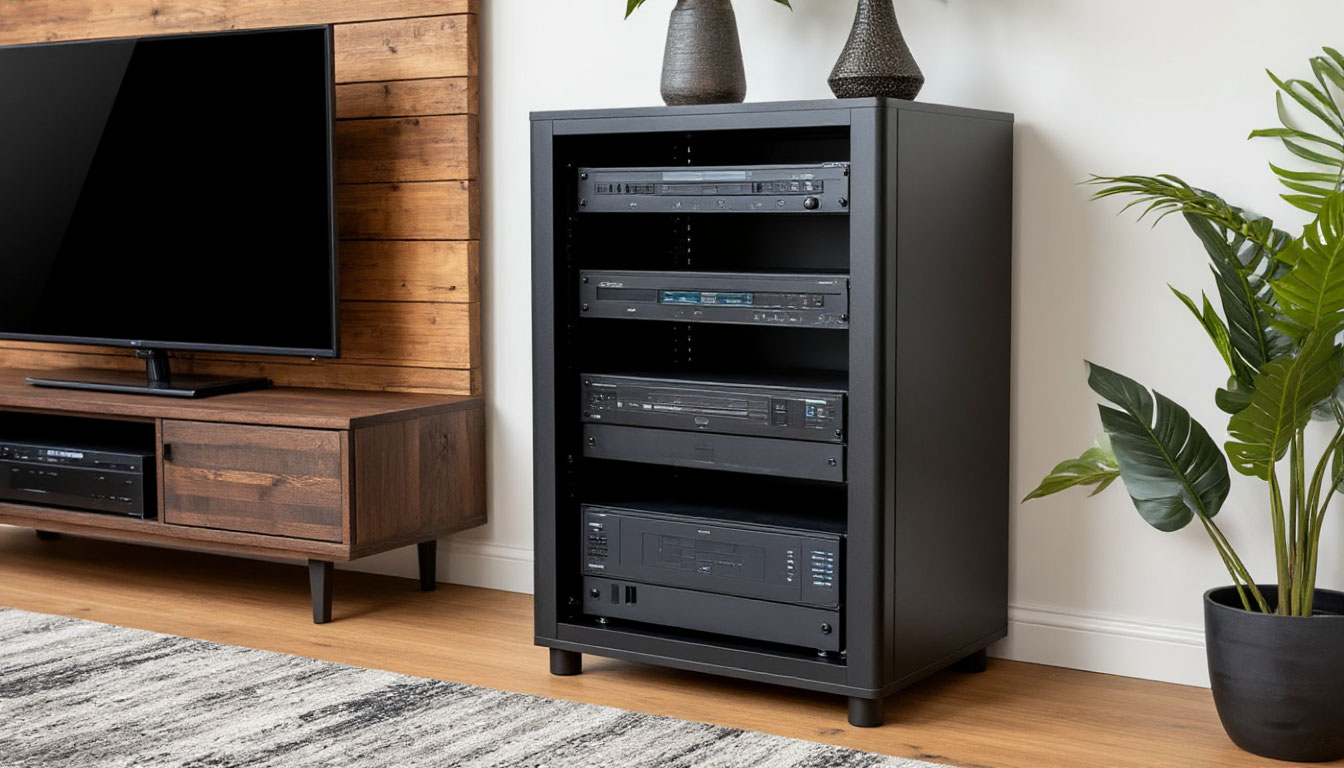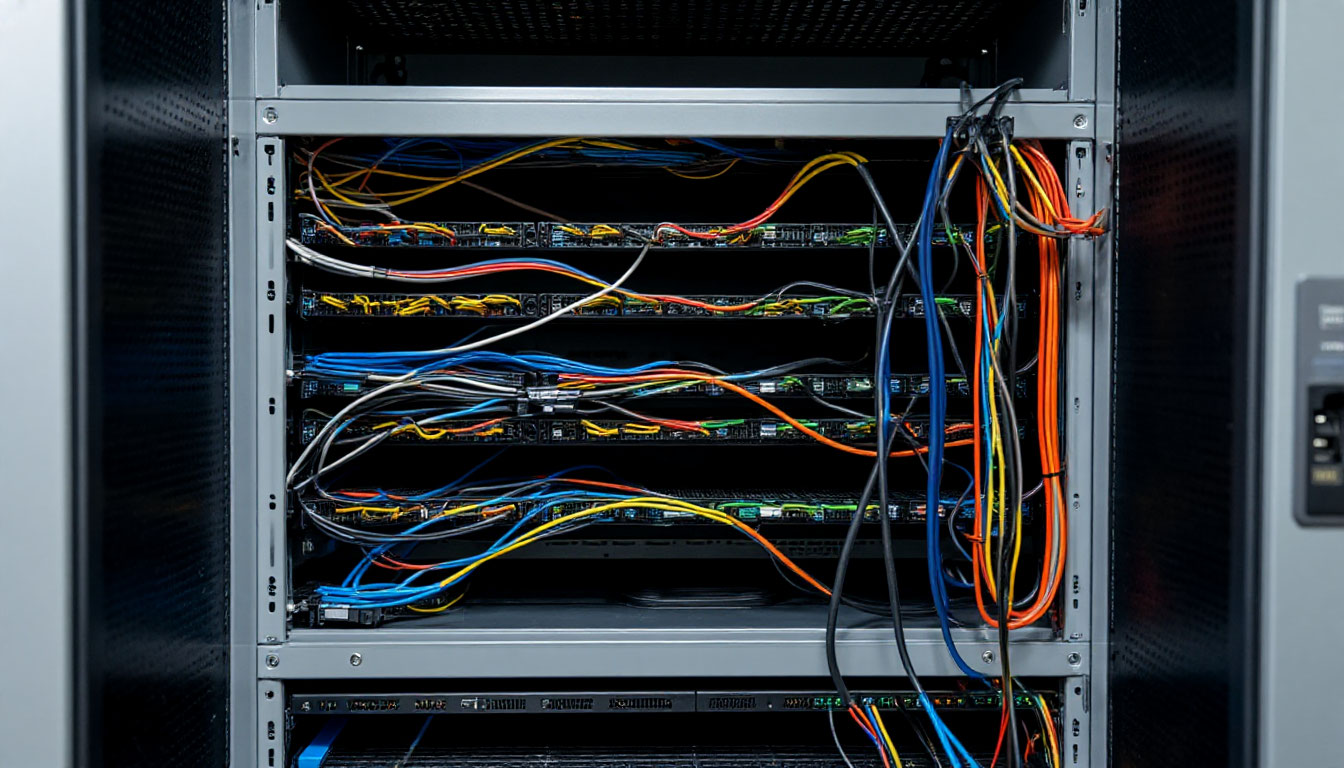
How to Mount Server in Rack: Installation Tips
Servers come as indispensable elements of a network infrastructure. They serve a...

For modern enterprises, data centers serve as the heart that ensures the viable existence of the entire business and all its systems, even in emergency situations. Today, data centers are a key element of the IT infrastructure.
As the importance of information technology in business grows, the demand for such “living organisms” and their services gains popularity. Thus, most companies focus on constant equipment improvement due to growing business needs. The development and maintenance of data centers require modern solutions that can ensure an uninterrupted power supply, customization, and high performance of equipment.
Therefore, almost all companies that use data centers seek ways to optimize their performance and improve efficiency.
There are a number of measures that help improve the power usage effectiveness (PUE) of your system, which is considered one of the essential metrics of data center energy efficiency. Below, let’s discuss the main measures:
1. Sufficient air-conditioned cabinets cooling. High-precision devices (computers, processors, drives) are characterized by a high level of energy consumption and release a lot of heat into the atmosphere. One server rack generates 5–7 kW of heat during operation. In a small server room, 7-10 racks will generate more than 50 kW of heat. The rise in temperature negatively affects the effectiveness and performance of traditional HHD drives. Thus, premises must be well-conditioned. It is required to select optimal ways of cooling the system and premises.
The following solutions can be used: natural heat conduction, passive ventilation, forced ventilation, displacement air conditioning cooling, and dedicated server rack cooling systems.
2. Data center consolidation. This measure is ideal for organizations with multiple data centers. Consolidating several systems results in significant cost savings. Moreover, the occupied areas for server rooms will be reduced.
Thanks to the monitoring system, all the data obtained during the consolidation will be analyzed and to show how to improve manageability, while receiving significant savings in money and energy.
3. Energy efficiency. It is achieved by increasing the temperature inside the data center to 24 degrees Celsius to reduce the load on the cooling system; using outside airflows instead of expensive air conditioning; alternating of “hot” and “cold” air corridors; and using energy management software on servers to ensure maximum efficiency, for example, when using feed-in tariffs.
4. The use of soundproof server racks and floor-standing cabinets. The placement of power distribution units (PDUs) within racks can also affect cooling. If the PDUs are not properly positioned, they may block the airflow inside the rack. Many product producers paint furniture white color to minimize overheating. This simple solution can help save on monthly data center energy bills.
5. Hardware upgrades. For the effective operation of the data center, it is recommended to upgrade the hardware. Firstly, it will help increase the level of software management. Second, equipment upgrades will reduce maintenance and support costs. Thirdly, it will reduce energy costs. Modernization will bring about 10-15% savings on equipment maintenance costs per year.
1. Secure infrastructure. Data centers are equipped according to specific specifications and standards. High standards are required for the smooth functioning of high-tech equipment. With proper cooling, generators, safety systems, and many other factors, downtime due to equipment failure is minimized.
2. Data storage. In case of accidents and failures, your data is regularly backed up, copies are stored in a protected space. Even if an emergency occurs and the data center itself suffers, important information will not disappear.
3. Safety. Data centers are protected from external intrusions, unauthorized access, fires, floods.
4. Cost Saving. Maintaining your own server room and IT staff is more expensive than using the facilities of borrowed capacities.
5. Fast customization. Data center managers can adjust settings and increase or decrease the capacities of the whole system in several clicks.
They distinguish between a free-standing server cabinet and a wall-mounted model. Floor standing options are more practical for server premises. If you buy a floor server cabinet, you’ll enjoy the following benefits.
Applying a spacious and multi-layer cabinet for your server room is advantageous since it ensures the required device productivity and helps create the necessary conditions for its operation.
Remember, there are not just 5 ways of how to improve data center efficiency. Keeping the environmental issue as the top priority is one of the main aspects of optimization. Always take a proactive approach to data center design and development. Installing redundant hardware is also important in maintaining optimal performance in your data center environment. When optimizing the system, you are implementing a more reliable platform that will help you save money and improve the overall performance of your business.
The smooth and proper functioning of any organism depends on the timely identification of problems and their elimination. A data center is a complicated organism, where dozens of units are interconnected and communicate with each other, forming a complex system. Thus, a server room is a functioning body that requires regular examination and hazard elimination.
Failures in operation happen to any organism. Human bodies tend to get sick or catch a cold, for instance. Digital bodies can also face breaks or malfunctions. Timely maintenance and examination help prevent breaks, eliminate the risk of malfunction, and timely identify hazards.
Data center inspection is carried out by professional authorized system administrators. The staff has a data center maintenance checklist to comply with requirements and not forget some duties. Below, let’s have a deeper look at each stage of DC inspection and serving.
Any maintenance should start with a visual assessment of the system condition. Just walk through server racks and look at hardware, cables, and rack accessories. Answering the following questions will help make a comprehensible visual examination:
If you answer some questions abnormally, it is a reason to consider maintenance more deeply and start a further examination.
Regular cleaning is required since the accumulation of debris and dirt leads to more serious problems, up to equipment overheating and downtime. Thus, it is important to clean active and passive hardware, fan blades, posts, and accessories from debris that flies in the air and settles on surfaces.
Make sure to clean data centers correctly. IT equipment is vulnerable to moisture so it is necessary to use a damp (but not wet!) cloth for cleaning devices.
You probably know that it is easier to prevent damage rather than repair it. For businesses, it means saving costs on DC arrangement and maintenance. Thus, regular testing of system algorithms and devices can prevent facilities from downtime and the need to buy new hardware. The following tests are performed:
Not only the software but also the rooms themselves require testing. For instance, fire suppression systems should be tested timely. Professional employees are hired for this task.
It is essential to set the control system to monitor performance and get timely alarms in the case of malfunctioning. This feature allows for simplifying system monitoring and getting regular reports. By installing a reporting system, IT specialists can control and monitor environmental and system indicators remotely.
Climate control reporting systems are the most popular and needed type of monitoring tool. They are installed in all server rooms obligatorily.
Even if some components fail to work, it is crucial to replace and repair them timely. Neglecting this issue will lead to the situation worsening and even major breaks. After all, any equipment break means downtime, which results in loss of money and data for facilities.
Here, two types of safety issues are subdivided:
Modern manufacturers offer multiple ways to secure data centers and hardware. Special cabinets and cages are available to accommodate and store equipment. Locks, surveillance systems, and biometric pass algorithms are implemented to secure data and physical devices.
This point implies getting your DC prepared for a disaster. Is the staff trained on what to do in the case of a disaster? Do you have backup generators, HVAC tools, and battery banks installed in server rooms? This rule is of particular importance for seismically active regions. The data center should be ready to withstand earthquakes and other natural disasters.
When performing tech duties, system administrators may need to unplug the IT system. In such cases, redundancies are created. These redundancies will power system units and components during maintenance works. There are 4 tiers of backup redundancies, which differ in the guaranteed uptime, efficiency, and running hours. They allow for avoiding the interruption of the functioning cycle.
Telecommunication hardware (computers, servers, routers, monitors, etc.) is vulnerable to environmental changes. Any surge of humidity or temperature can result in overheating, break, and downtime. Too high temperature leads to overheating, while too low temperature results in increased energy consumption. Improper humidity conditions cause condensation, rusting, or the accumulation of static charge. This is why it is crucial to maintain an optimal climate inside server rooms.
Setting new, more powerful architectures requires prior testing. When dealing with the creation of a reliable protocol, it is necessary to pass three stages: building, testing, and running. This algorithm allows for eliminating failures when architectures are introduced to operation. Even major system crashes (NYSE) could have been prevented if they would apply this rule.
The competence, knowledge, and expertise of the maintenance staff play a crucial role. The effectiveness of system performance depends on the correctly done duties. Thus, it is important to train employees on how to apply data center operations and maintenance best practices to do their duties correctly and thoroughly. Skilled employees will do their duties correctly and won’t cause unintentional damage due to unacquaintance.
Taking preventative measures helps avoid equipment damage, extra expenses, and system downtime. Thus, it is recommended to stick to the rule of 4 P’s (Preventive, Procedures, Protection, and Purity). Mentioned steps and techniques help guarantee the smooth performance of network system units and prolong the hardware lifecycle. Never neglect preventative measures and timely maintenance if you want to enjoy the long life of your IT system.

Servers come as indispensable elements of a network infrastructure. They serve a...

Most home owners want to enjoy movies in a good quality and with good sound. Thu...

No system can function without power. Network devices consume energy during oper...